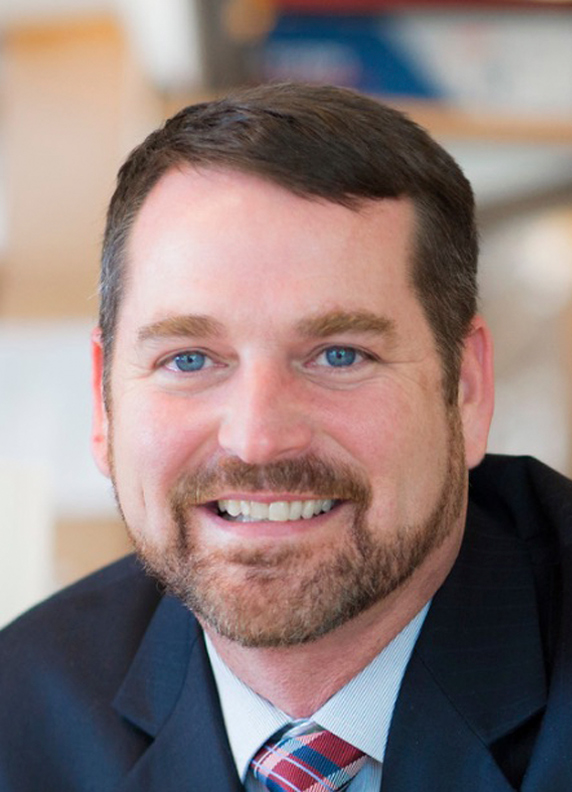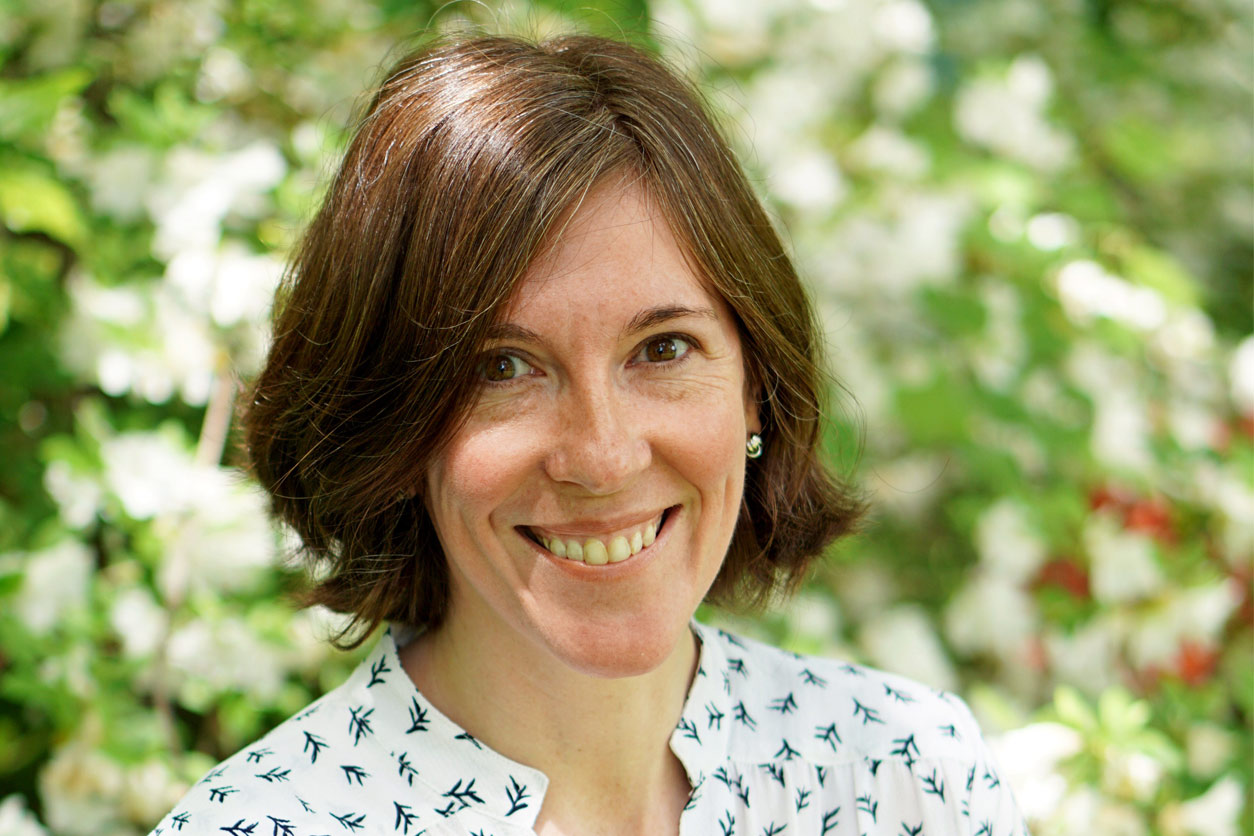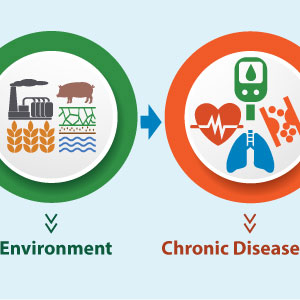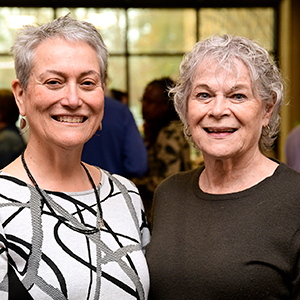NIEHS grantees discussed topics ranging from environmental influences on chronic diseases to interventions aimed at reducing harmful exposures during the Exposome and Health Conference, which was hosted by the University of Southern California (USC) on Oct. 27. The exposome refers to all environmental exposures and corresponding biological responses experienced by an individual throughout his or her life.
 Throughout the years, NIEHS-funded scientists from USC have conducted research related to air pollution, environmental influences on brain aging, developmental origins of child liver injury, and how chemical exposures affect pregnancy, among other topics. (Photo courtesy of TonelsonProductions / Shutterstock.com)
Throughout the years, NIEHS-funded scientists from USC have conducted research related to air pollution, environmental influences on brain aging, developmental origins of child liver injury, and how chemical exposures affect pregnancy, among other topics. (Photo courtesy of TonelsonProductions / Shutterstock.com)New center tackles common diseases
 At the Keck School of Medicine, Chatzi leads an interdisciplinary research program focused on understanding how the environment affects chronic metabolic diseases across the life course. She is principal investigator of the new Center for Translational Research on Environmental Health. (Photo courtesy of Andrew Zaw / USC)
At the Keck School of Medicine, Chatzi leads an interdisciplinary research program focused on understanding how the environment affects chronic metabolic diseases across the life course. She is principal investigator of the new Center for Translational Research on Environmental Health. (Photo courtesy of Andrew Zaw / USC)Lida Chatzi, M.D., Ph.D., from the USC Keck School of Medicine, announced the launch of the university’s Center for Translational Research on Environmental Health.
That center, which applies the NIEHS Translational Research Framework, will enable researchers to engage in a transdisciplinary, team science approach to investigate environmental risk factors for common diseases such as cancer, type 2 diabetes, obesity, and liver disease.
“The health of Americans has been declining since the 1990s and the major question is ‘Why?’,” said Chatzi, the center’s founding director.
“Chronic diseases such as cardiovascular disease, stroke, and cancer almost all follow the same geographical patterns,” she noted. “So, it becomes clear that the environment plays a key role in the development of these major conditions.”
Learn about Chatzi’s recent research into how exposure to per- and polyfluoroalkyl substances, also called PFAS, may increase diabetes risk in Latina adolescents.
Exploring the exposome
Exposome research examines the environment as a complex interplay of numerous exposures we experience throughout life, with the goal of understanding how resulting biological changes may lead to disease, explained Gary Miller, Ph.D., from Columbia University.
Founding editor-in-chief of Exposome, a new academic journal, Miller said there is much to discover on the topic.
 Miller shared his thoughts on the exposome and other topics during a recent conversation with NIEHS and National Toxicology Program Director Rick Woychik, Ph.D. (Photo courtesy of Gary Miller)
Miller shared his thoughts on the exposome and other topics during a recent conversation with NIEHS and National Toxicology Program Director Rick Woychik, Ph.D. (Photo courtesy of Gary Miller)“There has been extraordinary progress in genetics and genomics,” he began. “We know that our phenotype is a result of the combination of our genes and our environment. If that is the case, why do we spend a disproportionate amount of time, money, and energy on genetics without also focusing on the exposome?”
Phenotype refers to observable characteristics resulting from genetics or the environment.
Through multi-omics analysis — which draws from genomics, proteomics, metabolomics, and so forth — and development of tools that better assess exposures, scientists will expand knowledge of how our genes and environment can interact to affect health, noted Miller. He said that such advances will help to identify early biological responses to exposures before disease occurs, which may aid prevention efforts and inform patient decision-making.
The new USC center mentioned above will help to facilitate these types of investigations and breakthroughs, according to Chatzi.
Identifying effective interventions
Recent NIEHS Outstanding New Environmental Scientist Award recipient Jessie Buckley, Ph.D., from Johns Hopkins University, discussed exposures in the context of solution-oriented research, which focuses on actions that can reduce potential harm.
 Buckley is an environmental epidemiologist and co-investigator for the Environmental influences on Child Health Outcomes Data Analysis Center. (Photo courtesy of Jessie Buckley)
Buckley is an environmental epidemiologist and co-investigator for the Environmental influences on Child Health Outcomes Data Analysis Center. (Photo courtesy of Jessie Buckley)“Identifying exposure sources, or the upstream modifiable factors that give rise to exposures, can enable researchers to target an intervention that policymakers or individuals can think about and understand,” she said. “The solution-oriented approach allows for collaborations among exposure scientists and environmental engineers so we can test realistic interventions.”
This September Environmental Factor story offers more insight into Buckley’s thoughts on solution-focused research.
Overnutrition, chemicals, and liver disease
Overnutrition, or too much consumption of nutrients, is associated with nonalcoholic fatty liver disease (NAFLD), which now affects one-third of the global population, noted Matthew Cave, M.D., from the University of Louisville.
 Cave, shown here delivering a 2018 lecture at NIEHS, receives research funding through the institute’s Revolutionizing Innovative, Visionary Environmental Health Research program. (Photo courtesy of Michael Garske / NIEHS)
Cave, shown here delivering a 2018 lecture at NIEHS, receives research funding through the institute’s Revolutionizing Innovative, Visionary Environmental Health Research program. (Photo courtesy of Michael Garske / NIEHS)NAFLD is characterized by excess fat accumulation in the liver. Understanding the disease, specifically the interplay between overnutrition and exposure to chemicals, such as vinyl chloride, is one of Cave’s goals.
“So, why should we be concerned about environmental health and the liver?” Cave asked. “As a liver physician, I can tell you there is an epidemic.”
He said that from 1999 to 2016, annual cirrhosis deaths increased 65% in the U.S., and the liver cancer death rate doubled. Data suggest that the liver is the most sensitive organ in terms of potential damage from exposure to toxicants, according to Cave.
“Chemical pollutants can influence NAFLD development and severity,” he noted. “Metabolism disruption appears important, but nutritional interactions appear very important.”
Learn more about Cave’s research by reading the related NIEHS grantee highlights page.
(Jennifer Harker, Ph.D., is a technical writer-editor in the NIEHS Office of Communications and Public Liaison.)










